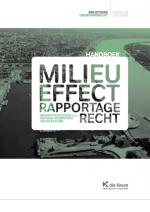Milieueffectrapportagerecht
Throughout the past decades, the rules on environmental impact assessment (EIA) have moved to the forefront of most planning policies worldwide. EIA, together with the specific rules on strategic environmental assessment (SEA), entails that preventive action should be taken, that environmental damage should, as a priority, be rectified at source and that the polluter should pay. Effects on the environment should be taken into account at the earliest possible stage in all the technical planning and decision-making processes with regards to plan, programmes and projects. Also reasonable alternatives to the purported actions are to be studied, while the public concerned needs to be allowed to actively participate in the decision-making process. In view of the increased judicial scrunity, the concrete application of EIA/SEA is giving rise to an increased number of deadlock scenarios. In the Flemish Region, several planning permits for large infrastructure projects have recently been quashed by court rulings because of an ideqaute application of the EIA/SEA-requirements. In their recently published handbook, written in Dutch, Hendrik Schoukens, Jan De Mulder and Nektaria Moskofidis comprehensively analyze the EIA/SEA rules that are applicable within the Flemish Region. By closely examining the interlinkages between the international, EU and regional rules on EIA/SEA this handbook offers the reader a valuable insight in a complex legal matter.

